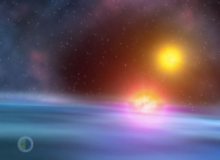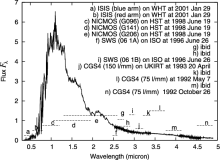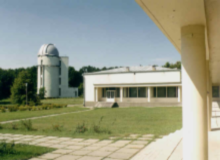RoPACS: Rocky Planets Around Cool Stars
A Marie Curie Initial Training Network
Understanding Planet Host Stars from Spectroscopy
Information regarding this project is presented below
ESR/ER Researchers
MAO ESR - Max Kuznetsov
Project Description
Understanding planet host stars from spectroscopy: Studying the properties of planet host stars is of great importance, since it can reveal detailed information about the planets themselves, their environments, and the physics behind planet formation. Atmospheric temperature and composition, stellar mass and radius, and the system age of planet host stars can be theoretically measured by comparing the latest theoretical model spectra to high resolution observational data. This project will further develop and use the latest theoretical model spectra to constrain cool star properties to new levels of accuracy. By targeting low-mass eclipsing binary systems (whose properties are well known), the mapping of spectroscopic fits parameters to known physical properties can be calibrated absolutely, thus producing a theoretical tool for determining planet host properties (e.g. radii) from spectroscopic study alone, and by extension the properties of exoplanets.
 |
 |
 |
| Artist impression of CM Draconis sunset from a hypothetical extrasolar planet. Low-mass eclipsing binary systems like CM Draconis can provide vital tests of theoretical models designed to reveal the properties of cool stars and by extension their exoplanet systems. Picture credit: Gabriel Pérez (SMM/IAC). | The spectral energy distribution for the M6 dwarf GJ406. The wavelength coverage of the different instruments is shown. Comparison with the predictions of theoretical model spectra can test our understanding of cool star atmospheric physics, with important implications for how we measure the properties of cool stars and their exoplanet populations. Picture credit: Pavlenko at al. 2006, A&A 447, 709-717. | The Main Astronomical Observatory in Kiev, part of the National Academy of Science of Ukraine. Picture credit: S.Bolotin. |
Project Supervisors
MAO - Y. Pavlenko, Y. Lyubchik